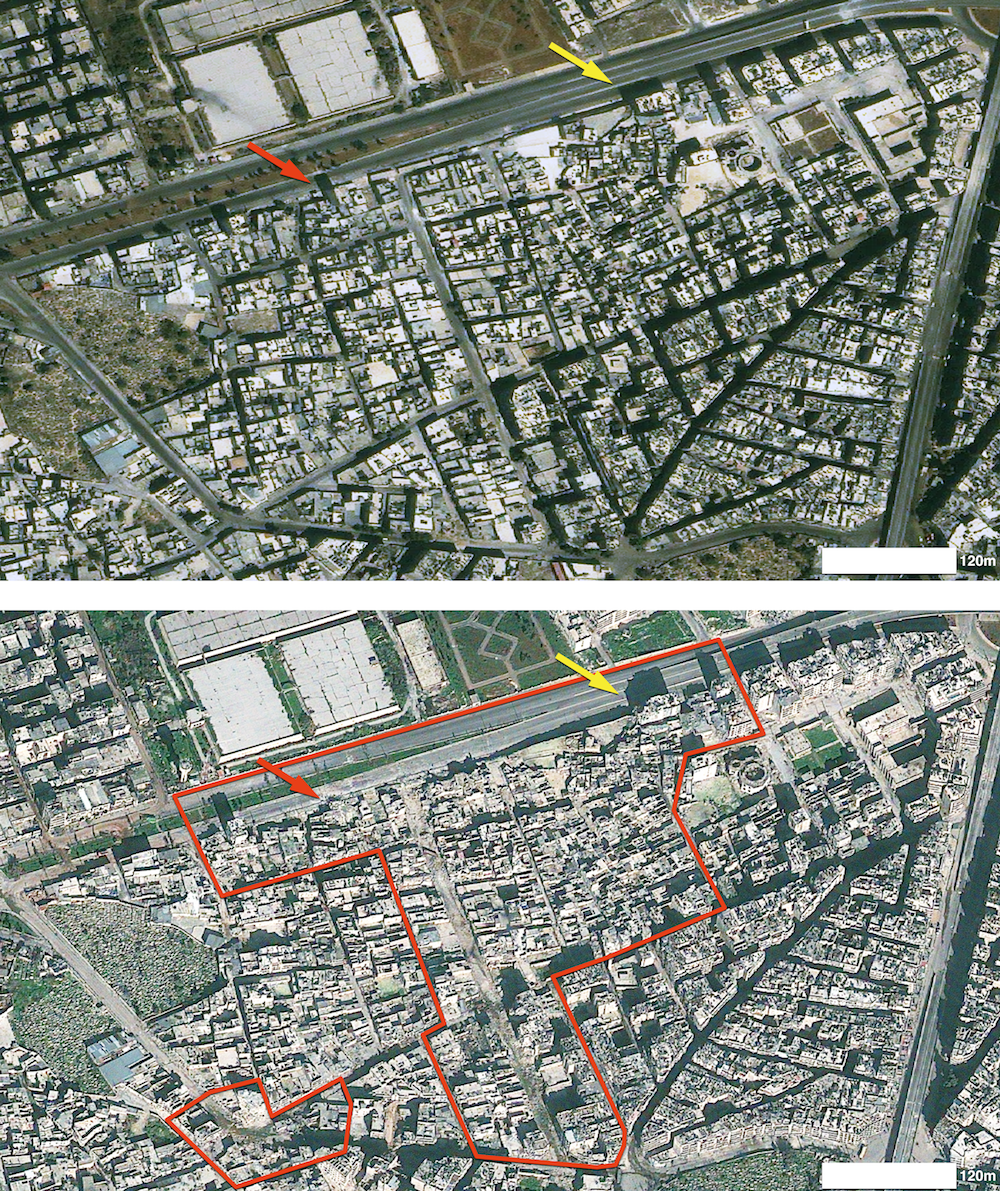Syria's Archaeological Sites Ravaged by Bombing, Looting

When Asma al-Assad, the British-born wife of Syrian President Bashar al-Assad, received an honorary Ph.D. in archeology in 2004 from the prestigious University of Rome "La Sapienza," she stressed that such knowledge should be used "to foster mutual respect for what human societies have achieved over the millennia across the globe."
Awarded for her role in the development of historical and archaeological studies and the preservation of the Syrian heritage, the degree was handed to al-Assad amid the ruins of the fabled ancient city of Ebla. The ceremony changed for the first time the University’s 700-year-old tradition which required the honorary degree to be given inside the city of Rome.
Ten years later, Asma is banned from traveling to all EU member states except the U.K, while bombing and looting have ravaged most of her country's precious archaeological sites.
Photos: Dangerous Tourist Destinations
According to UNESCO, the U.N. cultural, education and science arm, illegal excavation in the past three years has spread everywhere, from Ebla, the site where Asma received her honorary Ph.D., to the ancient Sumerian city of Mari.
Apamea, a city founded in 300 B.C. by one of Alexander the Great"s generals, which boasted one of the longest and widest colonnades in the ancient world, "is completely destroyed by thousands and thousands of illegal diggings," Francesco Bandarin, assistant director-general for culture at the agency, warned at a news conference last week.
"A site has a value not only for the monuments that are destroyed but also for the values of the objects in the ground," Bandarin said. "When this is lost, the scientific value of the site is clearly, clearly compromised," he added.
To curb the destruction, the European Union gave UNESCO 2.5 million euros ($3.4 million) last week for a program aimed at fighting looting as well as raising awareness on Syria's endangered cultural heritage.
Sign up for the Live Science daily newsletter now
Get the world’s most fascinating discoveries delivered straight to your inbox.
"I would like to thank Hollywood for bringing this issue to global attention," Bandarin said.
Toxic Gas First Used in Syria 1,700 Years Ago
He referred to the premiere of "The Monuments Men," a film which, starring George Clooney, Matt Damon, Bill Murray and Cate Blanchett, deals with attempts to save paintings and other cultural artifacts from destruction and looting during World War II.
"Sometimes Hollywood is more powerful than all the U.N. system put together," Bandarin said.
Syria's cultural heritage is unique. As Asma al-Assad remarked in her acceptance speech of the doctorate, it's a land where "those essential human attributes -- culture, society and civilization -- first flourished."
Along with Mesopotamia, the country echoes the main advances made by humankind such as the birth of the first villages and what is believed to be the world's first alphabet. Ironically, it is also here that archaeologists found the first evidence for the use of chemical weapons.
Over four millennia, Syria's valleys and deserts have witnessed everything from Biblical civilizations, Roman conquerors and Christian Crusaders. The result is an abundance of unique monuments which include Roman cities, castles and forts, medieval Islamic markets, palaces, mosques and cathedrals.
"The country has tens of thousands of archaeological sites, not all of which have been recorded or even discovered yet. Before the crisis, new sites were being discovered all the time," Emma Cunliffe, Global Heritage Preservation Fellow Postgraduate Researcher at Durham University, and author of "Damage to the Soul: Syria's Cultural Heritage in Conflict," told Discovery News.
Such was the fascination with a country so rich in archaeological legacies, that in 2010 more than 8.5 million tourists visited it. To woo the Western tourism market, Syria re-branded itself as a sun-soaked, crime-free country boasting breathtaking beaches and some of the world's most precious historical sites.
That's a far cry from the "country of evil" described by Italian journalist Domenico Quirico, kidnapped in Syria for five months last year.
Since the civil war began in March 2011 more than 100,000 people have been killed and near 8 million people have been driven from their homes, with 2 million of them fleeing the country.
What Are the Rules of War?
"Now cultural heritage is not at the top of anyone's list, and given the dramatic humanitarian crisis, nor should it be. However, it does still matter," Cunliffe said.
Syria has six sites inscribed to the World Heritage List: Aleppo with its stunningly preserved medieval settlement, Bosra, boasting the best-preserved Roman theater in the world, Damascus, with the spectacular 8th-century Great Mosque of the Umayyads and The site of Palmyra, one of the biggest attractions among tourists for its towering Roman colonnades built in a palm-fringed oasis.
Also among its treatures are the Qal'at Salah El-Din, also known as the fortress of Saladin, the castle of Crac des Chevaliers, the world's largest and best-preserved Crusader castle, and the ancient villages of northern Syria complete the list.
The fate of these jewels is yet unknown. According to Cunliffe, sites guards are often outnumbered and outgunned by determined teams of looters, while sites in areas of conflict are at risk from shelling and gunfire.
"All six of the World Heritage sites are damaged or threatened as well as a large number of Tentative World Heritage sites, and many important national sites. From the information we do have, the sites in old Homs are very badly damaged," Cunliffe said.
In a move praised by UNESCO, the Syrian government recently emptied the country's 34 museums and moved the contents "to safe havens," Bandarin said.
"It's the only piece of good news amid rubble of war. The damages to museums is less important than it would have been otherwise because of this preventive action," he added.
This story was provided by Discovery News.











